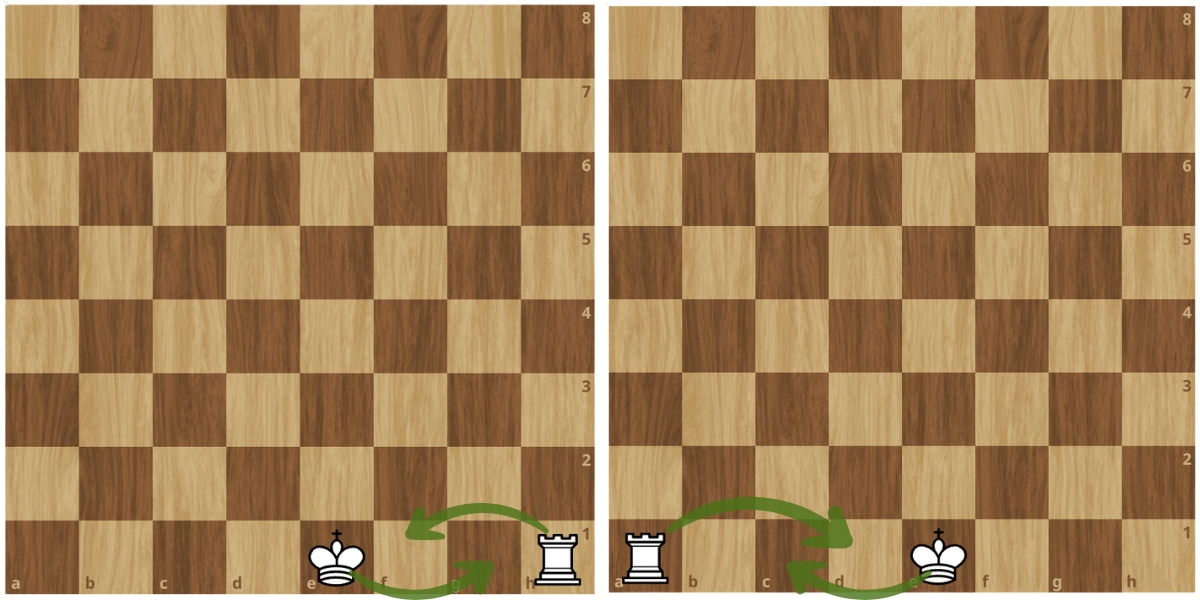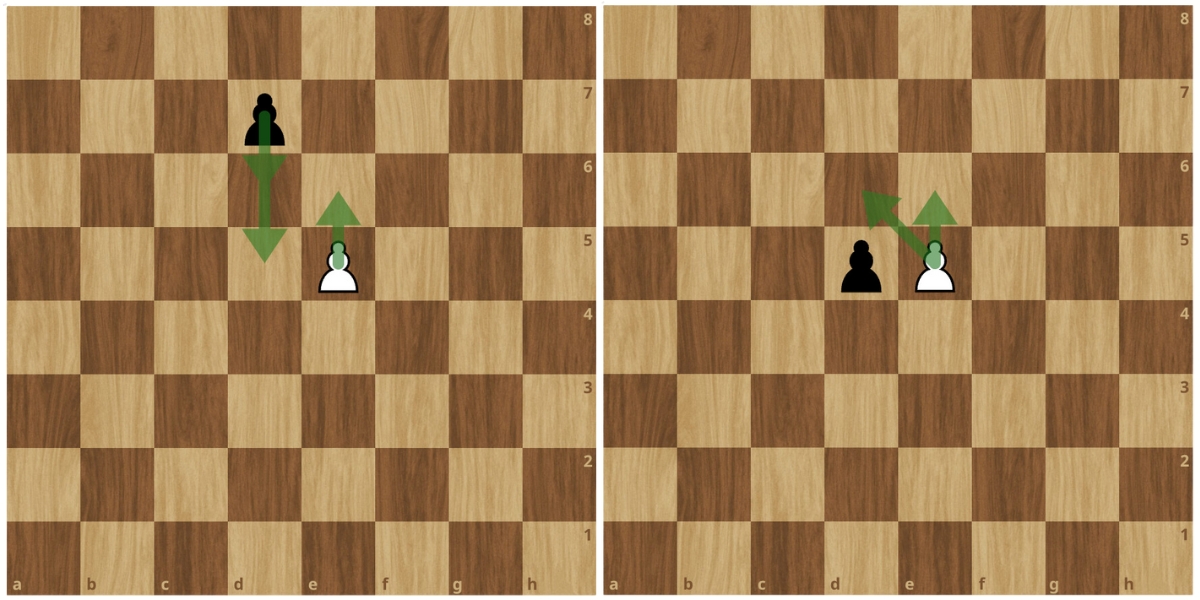
Chess 101: Your Complete Guide to Learning How to Play Chess in 2024
It's not surprising that you're interested in learning how to play chess. A time-honored game of intellectuals and nobility, chess is often revered as the ultimate test of mental prowess. It's not just the historical reputation that makes it appealing - scientific studies validate the cognitive benefits of chess, linking it to improved memory, enhanced cognitive abilities, and even prevention of Alzheimer's disease.
Perhaps you're intrigued by the intellectual prestige that accompanies mastery of the game or perhaps you desire to improve your mental capabilities. No matter what your motivation for learning chess is, you've come to the right place!
This blog will guide you through the initial stages of learning chess. Once you've grasped the fundamentals of the game, you can then start to work on improving your skills with these seven proven methods. So, let's embark on this journey together - the chessboard awaits!
Let’s start with the simplest question of what chess is. Afterward, we'll progress to the following points:
- Understanding the Chessboard
- The Pieces and Their Moves
- Chess Notation Basics
- The Objective of the Game
- Basic Chess Strategy
- How to Get Better
What is Chess
Chess is a strategic two-player board game, with the ultimate objective of putting the adversary's king into checkmate — a state of impending capture that cannot be avoided. It is played on a 64-square checkerboard by two players, known as White and Black, each starting with an army of 16 chess pieces in their color.
According to most sources, chess originated in northern India in the 6th century, while its rules evolved over the centuries, with the modern game taking shape in Europe during the 15th century. Today chess is one of the most popular games in the world, played both casually and competitively by an estimated 800 million people worldwide.
Understanding the Chessboard
The chessboard is a square board, divided into 64 squares of alternating colors arranged in an 8x8 grid. Although the square and pieces may appear in different colors and designs, they are typically referred to as black and white. In essence, the squares provide the battlefield for the chess pieces.
To ensure that your chessboard is positioned correctly, remember the rule: the bottom-left square should be a dark square from the perspective of the player controlling the white pieces (refer to examples below). This initial square is labeled 'a1'. In fact, every square on the chessboard has a designated alphanumeric name which is essential for recording games and positions.

A solid understanding of chess notation is important for engaging with various chess resources and improving your game. Therefore, we recommend that you familiarize yourself with the basics of chess notation. Let's delve into this crucial aspect of chess.
Chess Notation Basics
Chess notation is a fairly simple system. The vertical columns, called files, are labeled "a" through "h" from left to right from the perspective of the white player. The horizontal rows, known as ranks, are numbered "1" to "8" from bottom to top, again from the perspective of the white player. So each square on the 8x8 chessboard is identified by a unique coordinate pair — a letter and a number.
For example, the bottom left square from the white's perspective is "a1". The square next to "a1" is called "b1", while the one above it is "a2". This continues until you reach "h8", the top right square from the white's perspective.
Thus, when you're playing with the white pieces, the bottom-left corner of the board is square "a1", and the top-right square is "h8". Conversely, from the black player's viewpoint, the bottom-left is "h1", and the top-right is "a8".
Knowing this alphanumeric system of notation is fundamental to recording moves and games for future analysis and sharing with others. It also enables players to read and study games and strategies from books or online resources.
The Pieces and Their Moves
Each player starts the game with 16 pieces: one king, one queen, two rooks, two knights, two bishops, and eight pawns. Each of these pieces is normally assigned a numeric value (from 1 to 9) meant to indicate its strength. Importantly, however, pieces can gain or lose their strength and value depending on the position. For example, in close positions, a knight may be stronger than the rooks despite having a lower value at the beginning of the game. Here's a brief overview of the value and moves of each chess piece.
King: The king is the most important piece in the game. Although it is not a strong piece since it can only move one square in any direction, it is invaluable. If your king is checkmated, you lose the game.
Special moves - Castling: The purpose of castling is to enhance the safety of the king. Castling can occur only once for each side, and it allows the king to move two squares immediately. This unique move actually involves both the king and one of the rooks, making it the only chess move that allows playing with two pieces in the same turn. However, castling can only occur under certain conditions:
- Neither the king nor the chosen rook has previously moved in the game.
- There are no pieces between the king and the chosen rook.
- The king is not currently in check, and castling does not cause the king to pass through or land in a square that is attacked by an enemy piece.
You may castle the king toward both sides of the board: "kingside" (to the right) and "queenside" (to the left). In both cases, the king moves two squares toward the chosen rook, and then the rook moves to the square the king skipped over. See the example below.
Kingside castling, also known as short castling, is denoted as O-O in algebraic notation. Queenside castling, also known as long castling, is denoted as O-O-O. Strategic timing of castling can significantly impact the outcome of the game, which is why it is a vital part of the game.

Queen (9 points): The queen is the most powerful piece on the board. She can move any number of squares along a rank, file, or diagonal. In other words, it has the moves of all the other chess pieces except for the knights.
Rook (5 points): The rooks start in the corners of the board. They can move any number of squares along a rank or file, but they cannot leap over other pieces.
Knight (3 points): Knights move in an L-shape: two squares in one direction (rank or file) and then one square perpendicular to that. They are the only pieces that can "jump over" other pieces. At the beginning of the game, they are placed right next to the rooks.
Bishop (3 points): Each player starts the game with two bishops, which are placed next to the knights. One of the bishops starts on a light-colored square, and the other on a dark-colored square. Bishops can move any number of squares diagonally, but they cannot leap over other pieces.

Pawn (1 point): Pawns are both simple and complex in their movements. They move forward one square, but they capture diagonally. Pawns can only move forward, never backward. On its first move, a pawn has the option to move forward two squares. If an opposing pawn is located in a square oblique to it, it can capture it. Additionally, if a pawn reaches the opposite side of the board, it gets promoted and can be replaced by any piece the player chooses, typically a queen.
Special moves - En passant: Translating to "in passing" in French, "en passant" is a special pawn capture that can only occur when a player moves a pawn two squares forward from its starting position and lands beside an opponent's pawn. In this case, the opponent has the option to capture the first player's pawn as if it had only moved one square forward. This is one of the more complex rules of chess and can often take beginners by surprise.

Understanding the way each piece moves and its capabilities is the first step in learning chess. You may watch chess broadcasts and videos to get used to the way chess pieces move. Meanwhile, it is crucial to understand the reason why you should move your pieces and the principles you should follow while developing them. So let's discuss the objective of the chess game!
The Objective of the Game
The objective of the game of chess is the Checkmate! You can achieve checkmate by placing your opponent's king under direct threat of capture, from which escape is impossible. Any of the chess pieces, except for the kings themselves, can be used to checkmate the opposing king, thus ending the game in favor of the player who delivers the checkmate.
Although the game ends with a checkmate, a significant percentage of the games, especially at the higher level, stop way before a checkmate is delivered. Players will often resign if they believe that they have no chance of saving the game.
A game can also end in a draw under certain circumstances, such as
- when neither player has sufficient material to checkmate
- a position is repeated three times in a row
- no pawn move or capture has been made in the last fifty moves
- by mutual agreement, which may be prohibited in certain tournaments.
While checkmate is the ultimate goal, experienced players don't rush to attack the opponent's king right from the first moves. Instead, they seek to develop their pieces, bring their king into safety, control the board, and weaken their opponent's position through a variety of tactics. In other words, you should aim to gain an advantage first (whether positional or material) to then start thinking about checkmates.
To gain an advantage, players aim to capture their opponent's pieces, control the central squares, position their pieces harmoniously, and of course, impede the opponent from executing the same.
In essence, chess is a game of strategy and tactics, with deep complexity and numerous possibilities. While you try to better your position slowly and gradually, your every move counts towards achieving the ultimate objective: checkmating your opponent's King.
Basic Chess Strategy
First and foremost, it is crucial to understand that a game unfolds in three key stages: the opening, the middlegame, and the endgame. Each stage has its unique attributes, objectives, and strategies.
Opening:
This is the first stage of the game, where both players begin to position their pieces for the battle ahead. Most chess players have an arsenal of openings that they use on a regular basis, and you can too choose an opening to play with white and black pieces based on your preferences. The fundamental strategies for a successful opening are:
- Control the center: The four squares at the center of the board (d4, e4, d5, e5) are critical in the game. Try to control these squares with your pawns or pieces to give yourself the most flexibility in future moves.
- Develop your pieces: Avoid moving the same piece multiple times during the opening. Instead, aim to bring your knights and bishops into play.
- Keep your king safe: This is usually achieved by castling. Doing so not only ensures the safety of your king but also connects your rooks.
Middlegame:
Once the pieces are developed, players enter the middlegame. Here, strategy becomes more complex, and tactical thinking comes into play. A couple of key strategies include:
- Plan your moves: Try to devise a plan based on the position of your pieces, the position of your opponent's pieces, and the pawn structure. Your plan could be as simple as deciding to attack your opponent's queenside.
- Keep your king safe: Even in the middlegame, the safety of your king should be a priority. Avoid creating weaknesses around your king that your opponent can exploit.
Endgame:
This stage is reached when most pieces have been captured and only a few remain on the board. The endgame requires a different strategic approach:
- King activation: Unlike the opening and middlegame, your king becomes a strong piece in the endgame. Use your king actively and bring it to the center of the board.
- Pawn structure: Pawns become extremely important in the endgame. Aim to create a 'passed pawn' - a pawn that cannot be stopped from promoting to a queen by an opponent's pawn.
- Piece activity: Try to keep your pieces as active as possible. In the endgame, even a small advantage can be enough to win.
These basic strategies will help you grasp the essentials of chess. However, keep in mind that chess is a game of infinite possibilities, and each game will present you with new challenges and circumstances, so you'll need to adjust your strategies accordingly.
How to Get Better
Improving at chess is a journey of continuous learning and practice. Here are some valuable strategies that can help beginners advance their skills:
1. Play Regularly: The key to improvement in any discipline is consistent practice, and chess is no different. Try to play a few games each week. Online platforms make it easy to find opponents at your skill level anytime. But don't just waste time playing countless blitz and bullet games. Try longer time controls, so that you actually have time to think through your strategies throughout the game.
2. Review Your Games: After playing a game, it's beneficial to review your moves and analyze your game. Try to understand what you did well and identify areas where you struggled. You can import your game to Chessify's analysis dashboard and use our full-game analysis feature to quickly find your mistakes. Once you identify them, try to understand why it was wrong and learn from your mistakes.
3. Solve Puzzles and Tactics: Chess puzzles help sharpen your tactical skills by presenting you with a variety of chess positions to solve. Engaging regularly with chess puzzles will enhance your ability to spot opportunities and threats during games. You can start with these 10 puzzles for chess beginners.
4. Work on Opening Knowledge: Having a few opening lines under your belt can give you a good start in your games. You don't have to memorize many complex variations, but understanding the principles behind popular openings can be very useful. Go through the most popular openings for black and white and choose the one you think you'll enjoy playing the most.
In conclusion, the beautiful game of chess is a journey of continual learning, presenting a unique blend of strategy, creativity, and mental endurance. It’s a game that transcends age, language, and cultural boundaries, uniting millions worldwide in their shared love for this royal game. As you embark on your chess journey, remember that each game is an opportunity for learning, regardless of its final result. Use the strategies and recommendations outlined in this guide as your stepping stones and continue building upon them with consistent practice. So set up your board, start your clocks, and immerse yourself in the enthralling world of chess. After all, every grandmaster was once a beginner too!



